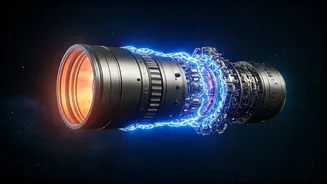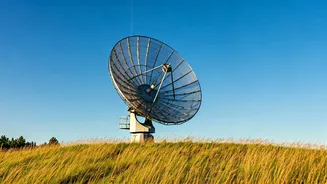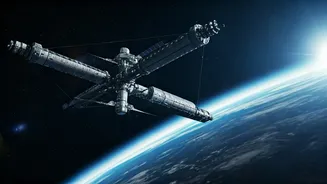Introducing FAST Technology
ECAPS's Fast-Start Thruster (FAST) technology marks a significant leap in spacecraft propulsion systems. This thruster technology is engineered for rapid
ignition and enhanced performance, addressing critical needs in satellite operations. Traditional thrusters often experience delays in startup, which can limit maneuverability and responsiveness, especially during critical mission phases. The FAST thruster overcomes these limitations by utilizing advanced ignition mechanisms and optimized propellant management. Its design ensures faster and more reliable thrust initiation, thereby improving a spacecraft's ability to react quickly to commands and adjust its orbit as necessary. This technological innovation is expected to enable more flexible and efficient satellite operations, expanding mission possibilities.
Key Technological Advancements
The FAST technology incorporates several cutting-edge advancements. One crucial element is the integration of a highly efficient ignition system. The ignition process is significantly faster than traditional methods, drastically reducing the time required to achieve full thrust. This quick ignition feature is essential for missions that need to rapidly adjust their trajectory or respond to sudden events. Furthermore, the FAST thruster optimizes propellant usage through advanced control algorithms and precise fuel injection systems. These improvements enhance the overall efficiency of the thruster, extending the lifespan and operational capabilities of the spacecraft. The FAST design also includes features that improve the thruster's reliability, minimizing the chance of malfunctions and ensuring continuous operation across the duration of a mission. The combination of these advancements positions the FAST technology as a superior choice for a variety of spacecraft applications.
Benefits for Space Missions
The advantages of ECAPS's FAST technology are substantial for various space missions. Firstly, the rapid startup time offers superior maneuverability and responsiveness. This is particularly advantageous for missions involved in tracking, observation, and communication, which require quick and accurate orbital adjustments. Secondly, the improved efficiency in propellant usage has the potential to lengthen the operational lifespan of satellites, thus providing cost benefits over the duration of a mission. Satellites can perform more maneuvers with the same amount of fuel, or they can use the surplus fuel for additional tasks. Thirdly, the enhanced reliability of the FAST thruster leads to increased mission success rates, lessening the need for expensive repairs or replacements. The technology's capability to react quickly can provide a crucial edge in complex situations, whether it's avoiding space debris or responding to emergencies. Overall, FAST technology enables more capable, reliable, and cost-effective space missions.












